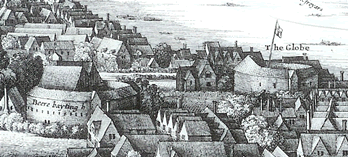LONDON
London was the biggest city in England, and was home to the royal family and most of the nobility. It also held the first permanent playhouse. By the 1600 the number of people going to the theatre per week, rose to 20,000. During the Elizabethan rain, London grew from 50,000 residents to 200,000, mostly due to migration from Europe. A lot of people were losing jobs in the countryside, so moved to London in search of jobs. It was incredibly overcrowded which increased crime rate and also allowed disease to spread quicker.


The main part of the city was by the river thames because people got their water from there, it was incredibly crowded around there as everyone wanted to live near the biggest water supply. The housing was mostly apartment buildings for the middle class, but London also homed some of the richest mansions.
AUDIENCES
Because of the cheap prices of open air theatres, everyone was able to go to the theatre. Servants could spend their spare time there as the standing tickets were 1 penny, and wealthy men and women could buy the expensive seats. Royals would hire the performing company to come to them rather than going to a public theatre. The low prices was one of the biggest reasons for theatre's growing popularity during that time. For 2 pennies someone could sit on the lower bench, and for a penny more they could get a cushion to sit on. The cheapest tickets in an indoor theatre was 6 pennies. Theatre's gained most of their money through selling food during the performances, and also because of the bad reputation standing tickets had, most people would try and buy the more expensive ones. Getting a standing ticket made you seem poor and smelly because most people complained about the smell of the pit and in those times, reputation was important. Some audience members were purely there to be seen and to show off their expensive clothes. The audience were also very involved in the performances, they would cheer the hero and boo the villain. Because of the lack of fear the audience members had to show their appearance, the plays had to be exciting in order to not get booed off. A lot of plays would re tell famous stories to attract the audiences attention, and use violence and humor to surprise them. In 1629, a French company were hissed and had apple seeds thrown at them. This was because they had used women to play the female roles which the English audiences didn't agree with. Theares also had to fight for their audience as there was a lot of other entertainment they could go and see such as cock-fighting and bear-baiting. In fact theatre got band of Thursdays because people enjoyed bear-baiting so much.
No comments:
Post a Comment